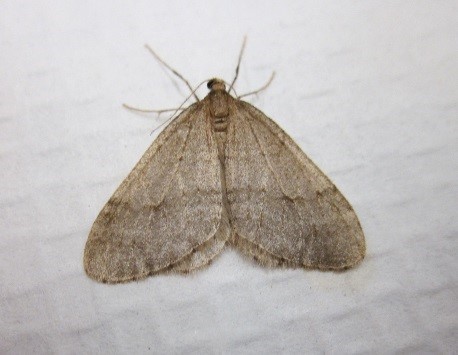|
SOUTH PORTLAND - Entomologists at the Maine Department of Agriculture,
Conservation and Forestry's Maine Forest Service (MFS) are gearing up for winter moth
with two initiatives. On Wednesday, November 29th they will be
setting out parasitic flies (Cyzenis
albicans) in South Portland as part of a biocontrol project to control the
invasive winter moth (Operophtera brumata). The MFS is also encouraging the public to report winter moth sightings through an online survey: http://www.maine.gov/dacf/wintermothsurvey.
WHAT: Setting out parasitic
flies as part of a biocontrol project to combat winter moth
The flies are currently in cocoons for the winter and will be set out in a cage buried in the ground until spring. In early May when the flies start to emerge the cage will be opened to release them to go to work on the winter moth.
WHEN: 11:00 a.m., Wednesday,
November 29
WHERE: 380 Highland Avenue, South Portland
Part of a larger release program
Wednesday’s scheduled release is part of a larger release program,
undertaken in conjunction with the University of Massachusetts, with funding from
the U.S. Department of Agriculture’s Forest Service to control the winter moth
across New England. Flies have been released in five other locations in south
coastal Maine starting in 2013 and are starting to become established in
Kittery and Cape Elizabeth. In many location in Massachusetts, where the flies
have been released since 2005, the parasitoid numbers have increased to the
point where they are having an impact on the winter moth population.
Concurrently, the Maine Forest Service is again seeking public assistance in tracking where winter moth adult males are showing up
in large numbers. This can be achieved using a simple
on-line survey. The information will be used to better understand the locations
and size of the winter moth population in Maine. Adults are active from late
November to January whenever the temperature is above freezing and they are strongly
attracted to light. Males are small, light brown to tan moths. They are
attracted to lights and to a chemical released by the females. Adult females are
small, gray and look like a mosquito wearing a fur coat. They have reduced
wings and are flightless. Females are most commonly found crawling on the
trunks of trees.
Public Encouraged to help track winter moth
The survey can be accessed online
at: http://www.maine.gov/dacf/wintermothsurvey. Reports of moth flights can also be made by phone at (207)
287-2431.
Winter moth (Operophtera brumata) & parasitic
flies (Cyzenis albicans)
Both the winter moth and their parasites are
originally from Europe. Winter moth defoliation was first
recorded in Maine in 2012 and now the moths have been detected from Kittery to
Mount Desert Island. The larvae (caterpillars) of winter moth feed on the
leaves deciduous trees and shrubs such as oaks, maples, apples and blueberries,
in early spring. Heavy defoliation for several consecutive years leads to
branch dieback and tree mortality. Winter moth defoliation has contributed to
tens of thousands of acres of oak mortality in Massachusetts and now there is
oak mortality in Cape Elizabeth.
The parasitic flies only attack winter moth and the adult flies are
around for just a few weeks in May making it a good biocontrol agent. They have
been successfully used as a control strategy in Nova Scotia, parts of western
Canada and the US, as well in southern New England.
For more information, contact: Charlene Donahue at 207-287-2431
 Winter moth adult
|